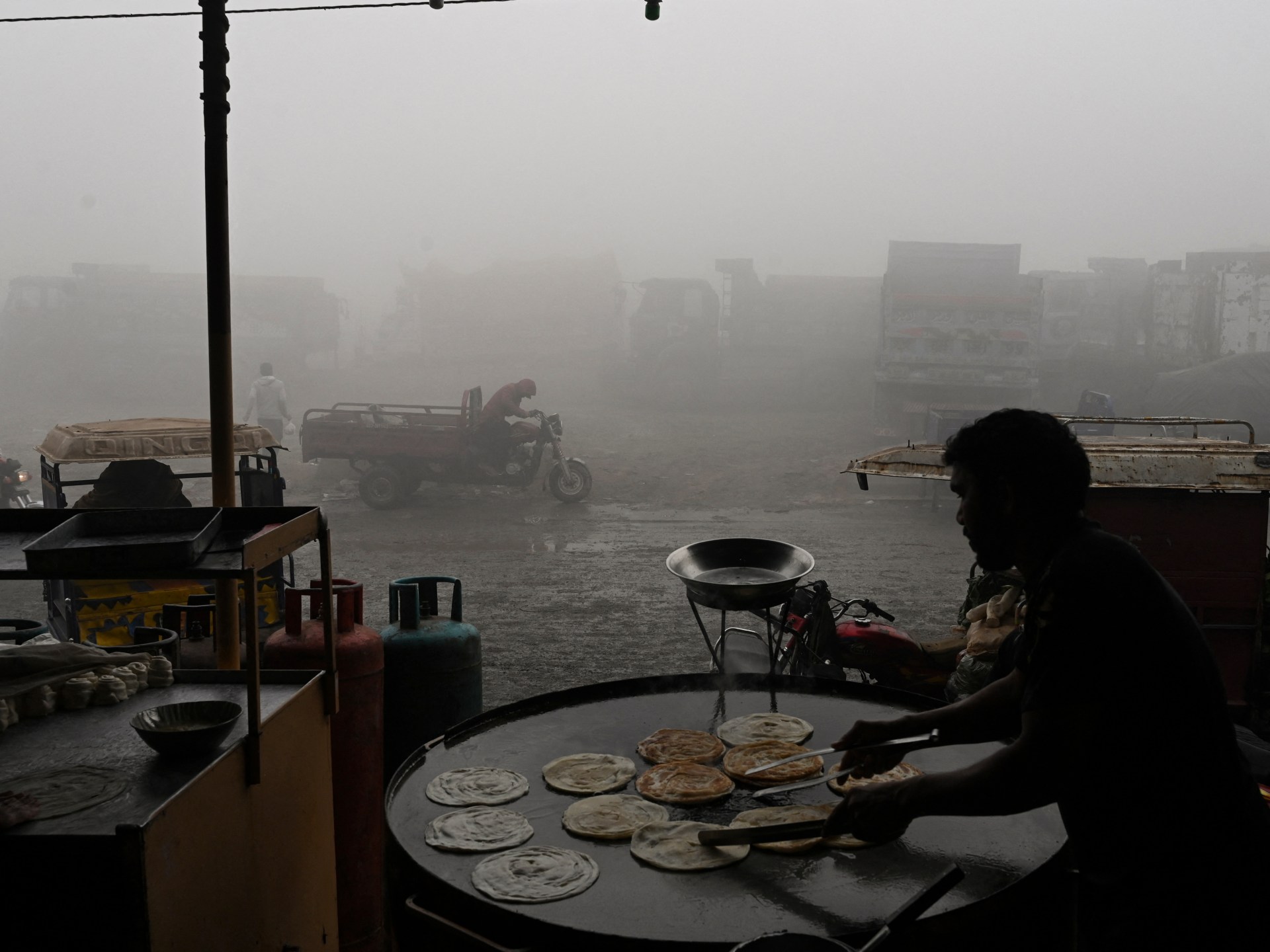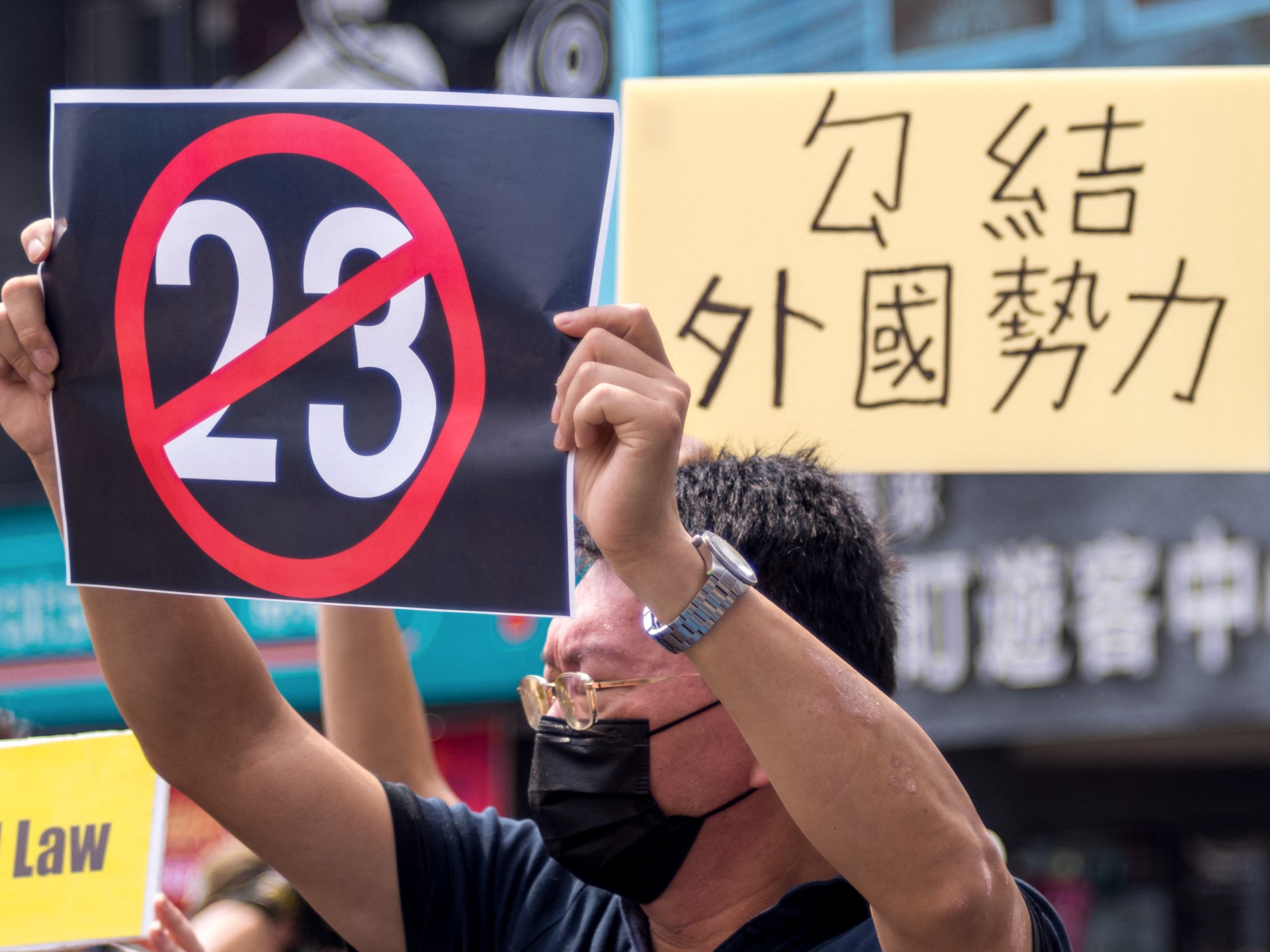
Cloud seeding has been used to combat dangerous smog in the megacity of Lahore, one of the most polluted cities in the world.
For the first time, artificial rain was used in Pakistan to combat dangerous environmental pollution Megacity Lahoresays the state government.
Planes equipped with cloud-seeding devices flew over the eastern city on Saturday, frequently one of the worst places worldwide for air pollution.
“It drizzled in at least 10 areas of Lahore,” Punjab Deputy Chief Minister Mohsin Naqvi told reporters, adding that authorities were monitoring the impact of the artificial rain within a 15 km (nine mile) radius.
The air quality in Lahore was good particularly bad In recent weeks, the Punjab government has used various tactics, including closing shops early and closing schools for two extra days, to help improve air quality – but nothing has worked.
The “gift” was provided by the United Arab Emirates, Naqvi said.
“Teams from the UAE along with two aircraft arrived here around 10 to 12 days ago. They used 48 flares to create the rain,” he said.
Naqvi said the team could assess the effects of the experiment by Saturday evening.
The United Arab Emirates is increasingly using cloud seeding, sometimes called artificial rain or blueskying, to produce rain in the country’s arid expanses.
The cloud seeding process involves burning silver iodide, a yellowish salt, in a combination with acetone in clouds to encourage the formation of condensation in the form of rain.
Naqvi reassured the public of the safety of artificial rain, citing more than 1,000 annual deployments by the UAE and similar technologies used in dozens of countries, including the United States, China and India.
The toxic smog of Lahore
Even very moderate rain can effectively reduce pollution, experts say.
On Saturday, levels of PM2.5 pollutants – cancer-causing microparticles that enter the bloodstream through the lungs – were measured in Lahore as dangerous, at more than 66 times the World Health Organization (WHO) danger limits.
Air pollution has worsened in Pakistan in recent years as a mix of low-quality diesel exhaust, smoke from seasonal crop burning and colder winter temperatures combine to create stagnant clouds of smog.
Lahore suffered the most toxic smogwhich suffocated the lungs of more than 11 million residents in Lahore in winter.
Breathing in toxic air has catastrophic health consequences.
According to the WHO, prolonged exposure can cause strokes, heart disease, lung cancer and respiratory diseases.
Pakistani authorities blame industrial emissions, smoke from brick kilns and vehicles, and the burning of crop residues and residual waste for air pollution and smog in the central province of Punjab.
Naqvi said there would be more instances of artificial rain in the city, where smog towers – large air purifiers designed to trap pollutants – would also be installed in the coming weeks.
Increasing industrialization in South Asia in recent decades has led to an increase in pollutant emissions from factories, construction activities and vehicles in densely populated areas.
The problem worsens in the cooler fall and winter months as temperature inversion prevents a layer of warm air from rising and traps pollutants closer to the ground.
Rising air pollution can reduce life expectancy Air pollution in South Asia, one of the most polluted regions in the world, has increased by more than five years per person, according to a report released in August that highlighted the growing health burden of hazardous air.
Pakistan is responsible for less than 1 percent of global carbon emissions but is among the top 10 countries most vulnerable to climate change.






Recent Comments